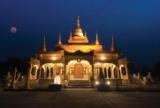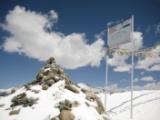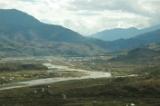Archives
Arunachal Calling
A rich state and its irony:
Though rich in terms of her immense natural wealth, Arunachal is devoid of any significant industrial development and suffers from an all pervading absence of economic opportunities due to her long isolation from the mainstream. Arunachal paints a poignant picture on the economic front. Clueless planners who often came to spend their predefined tenures in the state did succeed in preparing voluminous documents to get more funds from the center but were seen groping in the dark, when it came to delivering some tangible results to ‘bail-out’ this poor state from its penury. Arunachal continues to reel under poverty with a large portion of its large population still below the poverty line. Poor HDI ranking of the state reflects the hardships that people face in this state. Lack of basic facilities, poor infrastructure, large scale migration towards the capital complex of Itanagar due to the absence of economic opportunities in other parts of the state are adding to the woes of the people.
 With such a depressing scenario, tourism with its potential to ‘bail-out’ the state’s economy, offers a ‘silver lining to the dark cloud’. Now, with a dream team in place under the stewardship of Tourism Minister Mr. Pema Khandu, his colleagues Mr. Passang D. Sona, Mr. Sonam Chombey and highly motivated tourism department officials, tourism in Arunachal is gearing up to realize its true potential.
With such a depressing scenario, tourism with its potential to ‘bail-out’ the state’s economy, offers a ‘silver lining to the dark cloud’. Now, with a dream team in place under the stewardship of Tourism Minister Mr. Pema Khandu, his colleagues Mr. Passang D. Sona, Mr. Sonam Chombey and highly motivated tourism department officials, tourism in Arunachal is gearing up to realize its true potential.
Better late than never:
Arunachal has finally woken up to realize the potential of her most precious resource i.e. tourism which has the potential to turn the state’s economy around. To promote tourism in an organized manner, following eleven tourist circuits have been identified which have their own USPs to attract tourists:
- Tezpur-Bhalukpong-(Bomdila)-Tawang
- Tezpur-Seijosa-Bhalukpong-Tipi-Tezpur
- Itanagar-Ziro-(Daporijo)-Along-Pasighat
- Doimukh-Sagalee-Pakke-Kessang-Seppa
- Ziro-Palin-Nyapin-Sangram-Koloriang
- Daparijo-Taliha-Siyum-Nacho
- Along-(Menchukha)
- Pasighat-Jengging-Yingkiong-Tuting
- (Tinsukia)-Tezu-Hayuliang
- Dibrugarh-Roing-Mayudia-Anini
- Margherita-Miao-Namdapha
 These tourist circuits include wild life sanctuaries, orchid sanctuaries, national parks, high mountain trekking trails, adventure sports destinations and not forgetting, Arunachal’s cultural hubs, giving ‘life time experiences’ to visitors. Bhalukpong-(Bomdila)-Tawang is one of the most frequented circuits of Arunachal Pradesh. Angling and trekking along river Kameng at Bhalukpong, driving through the serene Tenga Valley and a bird’s eye view of the valley from the famous ‘Nag temple’ is truly a celestial experience. Bomdila is a great shopping experience for people who can take in the exquisite local products of (Monpas), Membas and Sherdukpens of the region. Trekkers may find ‘Chhurpi’ (the Yak Cheese) very useful as, besides giving much needed energy on tough ascents, those who have savoured Chhurpi will vouch for it being lasting company. Gompas at Bomdila, Dirang are worth visiting. One can spend hours meditating here leaving the materialistic world far behind. The geysers at Dirang are a special tourist attraction along with Dirang’s fruit laden apple and kiwi orchards. Dirang valley is unparalleled in its beauty when these orchards are in bloom. It is often said that a journey is more rewarding than the destination; this is true in the case of Tawang. Baisakhi, Jung, Se la, Jaswant Garh, all these places tell their own tales that one listens to while enjoying the scenic beauty of these places. Tawang is famous for its more than 350 years old Gompa ‘Galden Namgyal Lhatse’ set up by Mera Lama which is one of the biggest monasteries of the country. A sojourn at Tawang rejuvenates tourists and prepares them for the snowy heights of ‘Sangetsar lake’ which became ‘Madhuri Lake’ after Madhuri Dikshit’s scintillating dance sequence here for ‘Koyala’. A visit to ‘Bumla’ fills you with a patriotic fervor.
These tourist circuits include wild life sanctuaries, orchid sanctuaries, national parks, high mountain trekking trails, adventure sports destinations and not forgetting, Arunachal’s cultural hubs, giving ‘life time experiences’ to visitors. Bhalukpong-(Bomdila)-Tawang is one of the most frequented circuits of Arunachal Pradesh. Angling and trekking along river Kameng at Bhalukpong, driving through the serene Tenga Valley and a bird’s eye view of the valley from the famous ‘Nag temple’ is truly a celestial experience. Bomdila is a great shopping experience for people who can take in the exquisite local products of (Monpas), Membas and Sherdukpens of the region. Trekkers may find ‘Chhurpi’ (the Yak Cheese) very useful as, besides giving much needed energy on tough ascents, those who have savoured Chhurpi will vouch for it being lasting company. Gompas at Bomdila, Dirang are worth visiting. One can spend hours meditating here leaving the materialistic world far behind. The geysers at Dirang are a special tourist attraction along with Dirang’s fruit laden apple and kiwi orchards. Dirang valley is unparalleled in its beauty when these orchards are in bloom. It is often said that a journey is more rewarding than the destination; this is true in the case of Tawang. Baisakhi, Jung, Se la, Jaswant Garh, all these places tell their own tales that one listens to while enjoying the scenic beauty of these places. Tawang is famous for its more than 350 years old Gompa ‘Galden Namgyal Lhatse’ set up by Mera Lama which is one of the biggest monasteries of the country. A sojourn at Tawang rejuvenates tourists and prepares them for the snowy heights of ‘Sangetsar lake’ which became ‘Madhuri Lake’ after Madhuri Dikshit’s scintillating dance sequence here for ‘Koyala’. A visit to ‘Bumla’ fills you with a patriotic fervor.
Tipi is an orchid lover’s paradise. A visit to the orchid sanctuary is enlightening. Ziro reminds of a typical countryside, unadulterated, untouched and serene where one can listen to the ‘sound of silence’. Roing is one of the best planned towns of Arunachal while the Roing-Mayudia-Anini circuit gives tourists the best of everything. On the way to Roing, Chongkham calls for a brief halt. The Gompa here reflects the cultural wealth of this place and of its people. Chongkham is also known for its distinction of being the richest village in Asia.
 From the terrace of the government guest house at Mayudia, one can see snow covered peaks emerging from the cover of clouds. An ascent to Anini justifies the patience and perseverance one endures en route.
From the terrace of the government guest house at Mayudia, one can see snow covered peaks emerging from the cover of clouds. An ascent to Anini justifies the patience and perseverance one endures en route.
Namdapha is one of the largest National Parks of the country with altitudinal variation ranging from 250 meters to 4500 meters encompassing a large number of floral and faunal species. Staying in Deban’s forest rest house is truly a heavenly experience. Meandering Buri Dihing’s at Miao is a treat to photographers. Tea gardens in and around Changlang make the landscape more picturesque.
Blessed with much of nature’s wealth which is still unexplored - the present plight of Arunachal is not benefitting its major resource. Some marketing interventions to promote tourism have been witnessed in the recent past. Siang festival, Buddha Mahotsava, Annual Statehood Day celebration and celebrating festivals like Nyokum, Dree, Mopin, Losar etc on a large scale with the participation of national and international celebrities has done a good job in putting Arunachal on the world tourist map. The need of the hour is to develop a facilitative environment to attract tourists.
The Road ahead
 Tourism which has a high economic multiplier effect can bring a complete ‘turn around’ to Arunachal’s economy, if harnessed properly. Few initiatives have already been taken through the Public - Private - Partnership model and a lot more is still to come. New tourist destinations need to be developed with good facilities. Infrastructure development is a pre-requisite for the development of the tourism sector. Good quality hotels for high end tourists are required. The State Tourism policy needs to be clear on the issue of whether the state will go for ‘Mass tourism’ or ‘Exclusive tourism’ or ‘both’. Accordingly, Arunachal tourism’s positioning will have to be marketed. Mass tourism may affect the bio diversity of the region adversely and hence eco-tourism will have to be encouraged in certain circuits.
Tourism which has a high economic multiplier effect can bring a complete ‘turn around’ to Arunachal’s economy, if harnessed properly. Few initiatives have already been taken through the Public - Private - Partnership model and a lot more is still to come. New tourist destinations need to be developed with good facilities. Infrastructure development is a pre-requisite for the development of the tourism sector. Good quality hotels for high end tourists are required. The State Tourism policy needs to be clear on the issue of whether the state will go for ‘Mass tourism’ or ‘Exclusive tourism’ or ‘both’. Accordingly, Arunachal tourism’s positioning will have to be marketed. Mass tourism may affect the bio diversity of the region adversely and hence eco-tourism will have to be encouraged in certain circuits.
New trekking trails, adventure sports destinations will have to be marketed for reaching the right segments. Home stays, local food and wine festivals, paragliding, nature appreciation tours, tie- ups with national and international tour operators will ensure speedy growth of tourism in Arunachal.
The process to issue Inner Line Permits (ILP) and Protected Area Permits (PAP) needs to be made simpler so that tourists do not face any inconvenience in visiting any location in Arunachal Pradesh.
Besides natural and man made attractions, one important factor for the growth of tourism is the ‘people’ factor. The innocent, extremely hospitable and cheerful people of this land of ‘khusi-khusi’(Happiness), make Arunachal an indispensible destination.
Nature never did betray the heart that loved her. Come and explore the unexplored.

